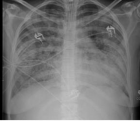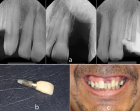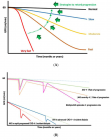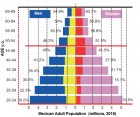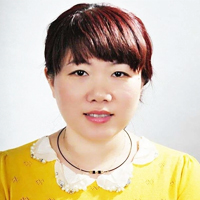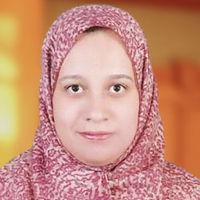Table of Contents
Differences between traditional Visualization and Virtual reality on motor performance in novel climbers
Published on: 6th February, 2018
OCLC Number/Unique Identifier: 7347073164
This paper analyses the effect of virtual reality visualization (VRV) on climbers, with respect to the traditional visualization methodology. The study sample was made up of 21 novel climbers: Control Group CG (N=7), Traditional Visualization Group TVG (N=7) and Virtual Reality Group VRG (N=7). In order to implement the mental imagery through virtual reality, a 360º Ricoh Theta S camera and a pair of Woxter Neo VR1 goggles were used. The data analysis was carried out with a simple ANOVA of three means. No statistically significant differences were found. The results are discussed and future lines of research are established.
Ultrasound conjugated with Laser Therapy in treatment of osteoarthritis: A case study
Published on: 24th January, 2018
OCLC Number/Unique Identifier: 7317653930
Osteoarthritis of the hand is a chronic condition that involves hand joints, but receives less attention. Few studies have investigated the use of ultrasound therapy and laser therapy for the treatment of hand osteoarthritis. The objective was to evaluate the effect of the conjugated treatment of therapeutic ultrasound and laser therapy on the pain and joint function of a patient with hand osteoarthritis. The is case of a woman, 57 years old, with a diagnosis of osteoarthritis on hand for 3 years, presenting constant pain and worsening after manual activities. The pain and function were evaluated, respectively, by Visual Analog Scale (VAS) and Australian Canadian Osteoarthritis Hand Index questionnaire (AUSCAN). After 12 sessions using ultrasound and laser therapy application, there was an expressive improvement in the pain and functional indexes of the patient. The combined application of therapeutic ultrasound and laser therapy, through the unified field action of the therapies used, proved to be efficient in reducing pain and improving the functionality.
Effect of foot posture on foot-specific health-related quality of life
Published on: 10th January, 2018
OCLC Number/Unique Identifier: 7317601185
The purpose of this study was to determine the relationship between Navicular drop (ND) and Hallux valgus (HV) angles and their effects on foot-specific health related quality of life. Sixty female patients with bilateral HV aged between 32-60 participated in this study. The patients with the HV deformity degree of “2” or “3” according to the Manchester scale were included.
HV angle were obtained from standing (weight bearing) bilateral antero-posterior radiographs. HV angle (A angle), intermetatarsal angle (B angle), hallux interphalangeal angle (C angle) were measured. Subtalar pronation was measured the navicular drop (ND) test. ND test were performed for both feet and recorded in millimeters. Foot-specific health related quality of life was measured using the Manhester-Oxford Foot Questionnaire (MOFQ).
There was a strong positive correlation between the ND qtest and the angles A, B, and C for the right foot (rho=0.749, 0.761 and 0.749 p<0.001, respectively,). There was a strong positive correlation between the MOFQ subscales and the angles A, B, and C for the right foot (p<0.001). There was a strong positive correlation between the MOFQ subscales and the angles A, B, and C for the right foot (p<0.001).
In conclusion, there were relationship between ND, HV angular severity and foot-specific health related quality of life. As the HV angular severity increased, there was greater drop in the navicula and reduction in quality of life.
Injuries of the shoulder sustained by Surfboard riders
Published on: 9th January, 2018
OCLC Number/Unique Identifier: 7317656813
Background: To determine the spectrum of shoulder pathologies suffered by surfers.
Methods: Prospective descriptive study. Surfers with shoulder injuries who were referred to a sub-speciality orthopaedic shoulder private practice situated on the Northern beaches of Sydney (Australia) were recruited over a three-year period.
Results: 42 shoulders in 37 subjects were included-12 acute injuries (29.3%), 9 acute on chronic (22%) and 20 chronic injuries. Average age 48 years (range 20-72 years). Seventeen subjects (46%) had manual occupations and 20 subjects (54%) had office-based occupations. Spectrum of pathologies included rotator cuff tendon tears, long head of biceps tendon pathology, labral tears, acromioclavicular and glenohumeral joint osteoarthritis.
Discussion: There is a wide spectrum of acute and chronic shoulder injuries sustained by surfers. The most common presentation was for chronic pathology. The average age of 48 suggests that age may play a role in attritional/degenerative change and therefore an increased likelihood of injury.
Progresses of the Badminton equipment relate to exercise: Some training aspects
Published on: 5th January, 2018
OCLC Number/Unique Identifier: 7317598633
Background: With the development of sports science and badminton equipment, the roles of badminton shoes, such as to alter lower - extremity biomechanical parameters, prevent sports injuries and enhance performance, were confirmed by a mass of studies.
Methods: In this study, a serial of methods including literature review, visualization analysis, mathematical statistics, are used to describe the progresses of the badminton shoes relate to exercise in some training aspects, which can be searched by CNKI and SCOPUS databases.
Results: Among the exiting research, most mainly focused on evaluation and design of badminton shoes, sports injuries and performance, some have tested and verified the roles mechanism of badminton shoes. However, there are still some disadvantages to can’t ignore, such as the quantities of studies the designed level and the mechanism exploration.
Conclusions: To sum up, the roles of the badminton shoes in sports training still need to be explored and confirmed.

HSPI: We're glad you're here. Please click "create a new Query" if you are a new visitor to our website and need further information from us.
If you are already a member of our network and need to keep track of any developments regarding a question you have already submitted, click "take me to my Query."






